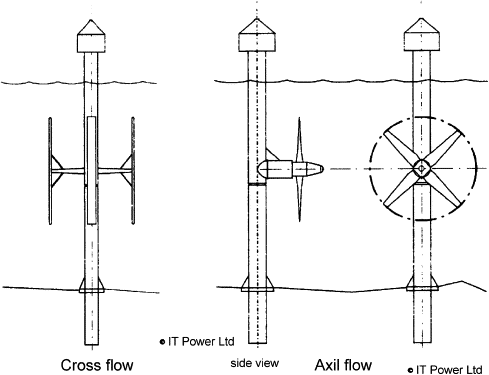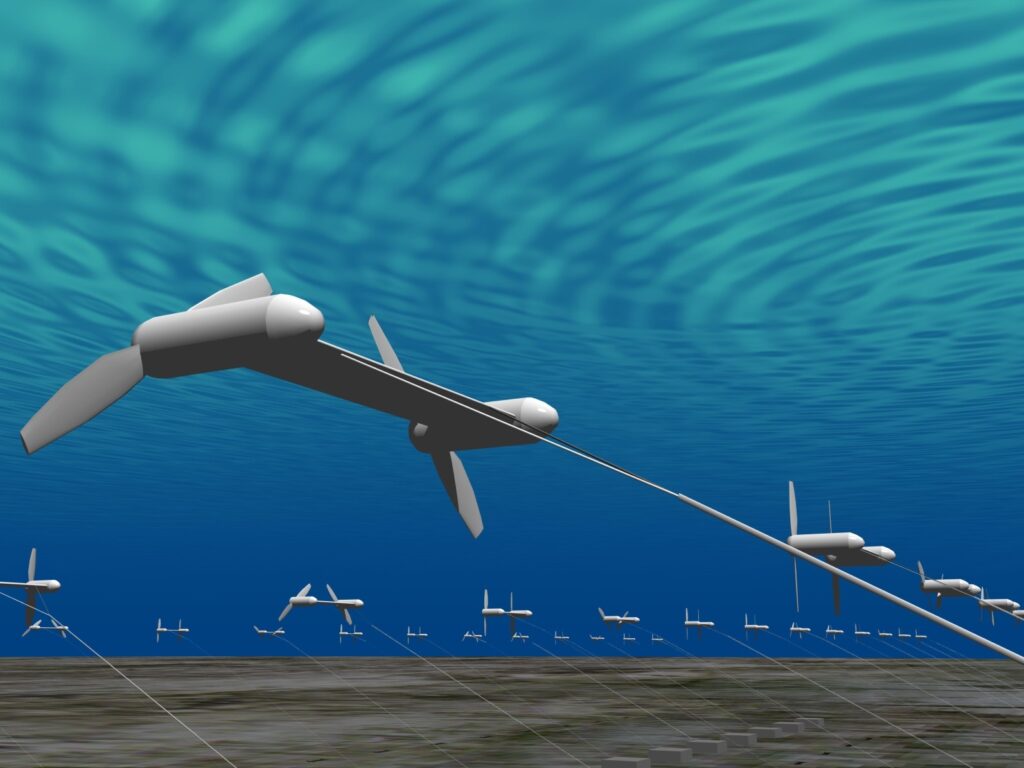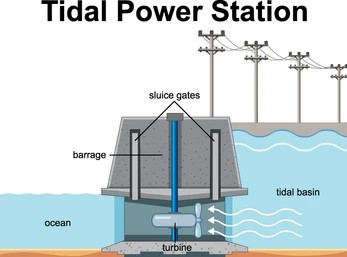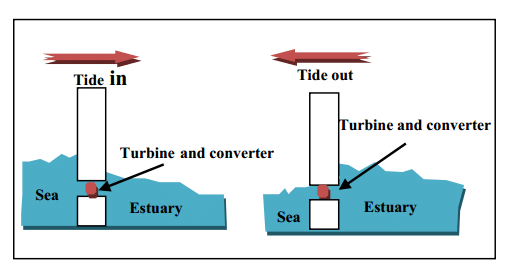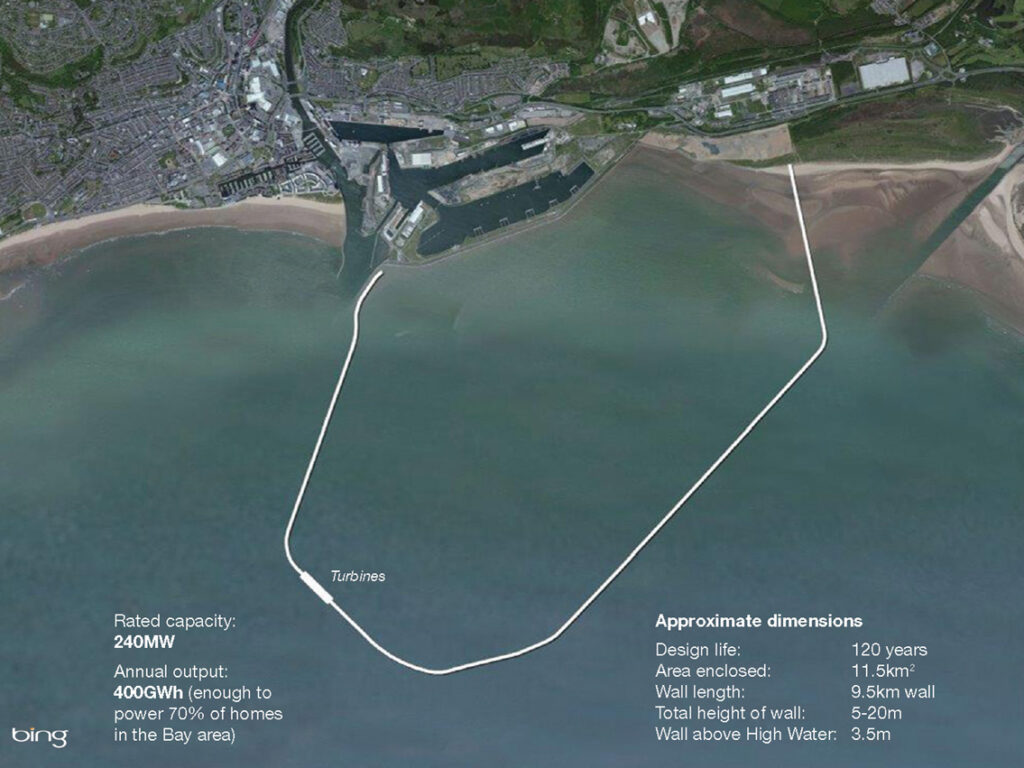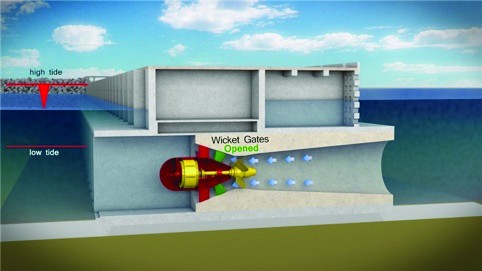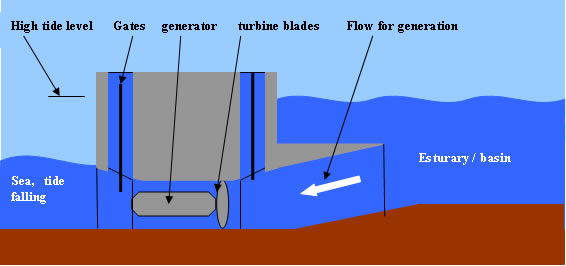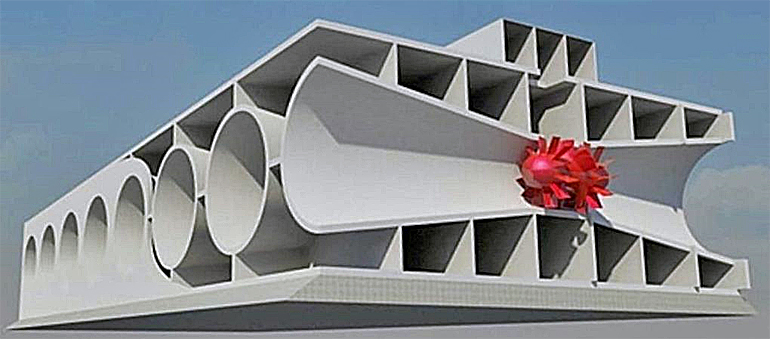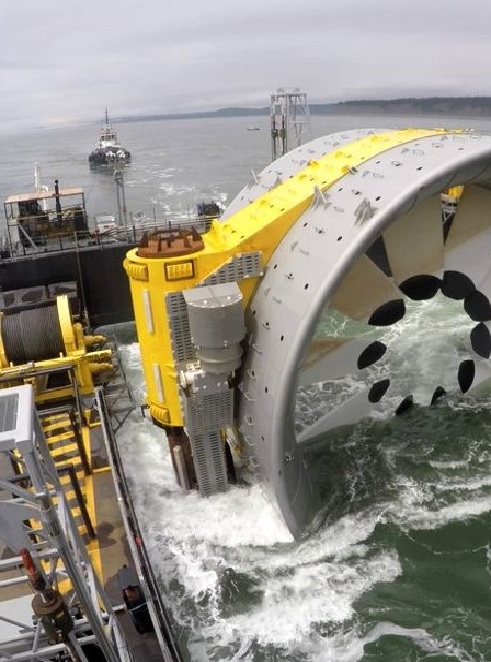
Energy from the Sea
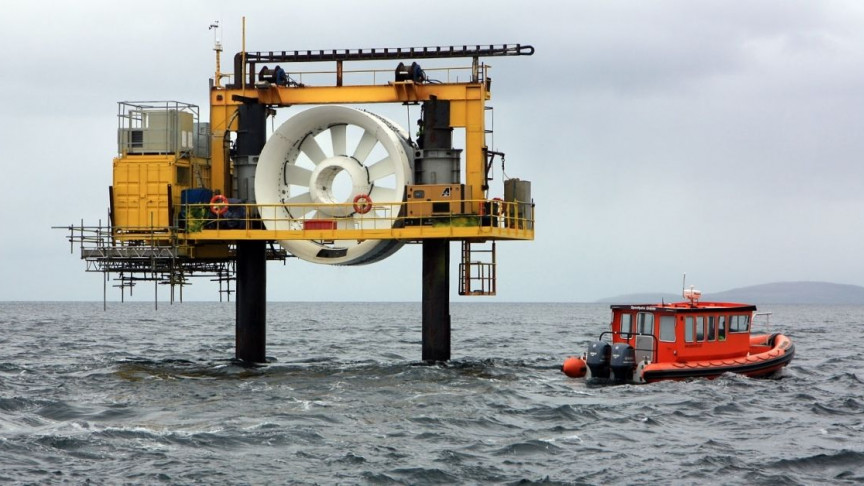
The energy is store in the sea in different forms. One is marine current energy. Marine current is generat by tidal affects and the thermal and salinity differences in the seawater.These types of energy sources are in non-conventional energy sources catogery. And also this energy source is divide three main categories,
1.Marine wave energy 2.Wave energy 3.Tidel energy
The energy of the ocean currents is extract by using submerged water turbines similar to wind turbines. The turbines have rotor blades, a generator for converting the rotational energy into electricity, and a means of transporting the electrical current to shore for incorporation into the electrical grid Also, there would need to be a way to keep the turbines stationary, such as posts or cables anchored to the sea floor. Additional components might include concentrators (or shrouds) around the blades to increase the flow and power output from the turbine.
The marine current is dense than air. So the size of the wind turbine should be smaller than a wind turbine.The velocity of the currents are lower than the wind.However, owing to ocean water is some 840 times denser than air, so speeds of about one-tenth of that of the wind speed can generate the same power.
History of marine energy
The world’s first patent for the wave energy was given in Paris in 1799. Monsieur Girard and his son proposed using marine energy for mechanical action such as drive heavy machinery, including mills, saws, and pumps. Bochaux Praceique developed a device to light and power his house. This application was also in France.
The pioneer of the modern wave energy was Yoshio Masuda, a Japanese naval commander. He test multiple different wave-energy devices at sea, and several hundred of these units are use to power navigation lights. Masuda also give his contribution for different wave-energy inventions, such as the KAIMEI, a large barge use as a testing platform, and the Oscillating Water Column, which was initially use for small-scale navigation.
Wave energy become popular in 1970s during the oil crisis.In year 1973, member of the Organization of Arab Petroleum Exporting Countries (OAPEC) decided to put a prohibition on oil exports. Therefore, people move on to alternative energy resources. Wave energy got a new interest in the 1970s during the oil crisis on 1973. In 1973, member of the, which in turn caused people to look for alternative energies. Stephan salter invented the Salter’s Duck, or nodding duck, which converted wave power into electricity.
Marine Current Energy Production
The energy is stored in the sea in different forms. One is marine current energy. Marine current is generated by tidal affects and the thermal and salinity differences in the seawater.
The energy of the ocean currents is extracted by using submerged water turbines similar to wind turbines. The turbines have rotor blades, a generator for converting the rotational energy into electricity, and a means of transporting the electrical current to shore for incorporation into the electrical grid Also, there would need to be a way to keep the turbines stationary, such as posts or cables anchored to the sea floor. Additional components might include concentrators (or shrouds) around the blades to increase the flow and power output from the turbine.
The marine current is dense than air. So the size of the wind turbine should be smaller than a wind turbine. The velocity of the currents are lower than the wind. However, owing to ocean water is some 840 times denser than air, so speeds of about one-tenth of that of the wind speed can generate the same power.
Tidal Energy
The tidal energy is produced by the surge of ocean waters during the rise and fall of tides. Tidal energy is a renewable source of energy. The ocean water level rises and falls according to a pattern. Mainly there are two types of waves.
- Durnal waves
- semi durnal waves
- Mixed semidiurnal
Diurnal tide – An area has a diurnal tidal cycle if it experiences one high and one low tide every lunar day. Many areas in the Gulf of Mexico experience these types of tides.
Semidiurnal tide – An area has a semidiurnal tidal cycle if it experiences two high and two low tides of approximately equal size every lunar day. Many areas on the eastern coast of North America experience these tidal cycles.
Mixed semidiurnal tide – . An area has a mixed semidiurnal tidal cycle if it experiences two high and two low tides of different size every lunar day. Many areas on the western coast of North America experience these tidal cycles
Tides formation
Tides are formed due to the rotational effect of earth and moon and the gravitational forces of the earth and moon.
Physics of Tidal waves
Rotational effect of earth and moon
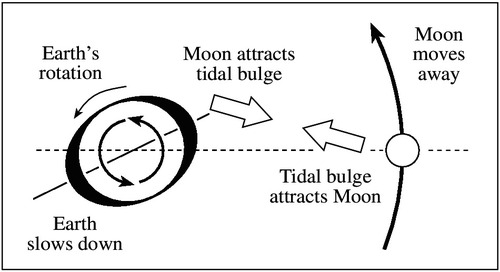
Earth and moon rotates around each other. This rotation gives rise to centrifugal force (F=mrω2). This centrifugal force acts on the seawater. However, earth and moon does not rotates around the halfway point between earth and moon (since earth is much bigger than moon). The common center of rotation is closer to the center of the earth (within the volume of earth).Rotation around this point creates a large centrifugal force on the sea water furthest from moon creating a water bulge . Sea water facing the moon also experience a centrifugal force but it is much weaker (since the distance from the earth’s surface to the common rotation point is small).
Gravitational force between earth and moon
Sea water on the side of the earth closest to the moon feel an increased gravitational pull making water bulge towards the moon (F=GMm/r2 ).Sea water on the side of the earth furthest to the moon feel relatively lower gravitational pull towards moon . According to these phenomena, a general point on earth should experience two tides per day (semidiurnal tide). However since moon is not on earth’s equatorial plane some points on earth may experience only one tide per day (diurnal tide). Since the sun is far away from earth than the moon, its effect on tides is much less than moon. Hence we did not consider the sun in the previous explanation .However when the sun and the moon are inline, the tides become higher (Spring tide) .When the sun and the moon are at 900 , the tides become lower (Neap tides).
Methods of generating power from the tidal energy
Tidal stream generator
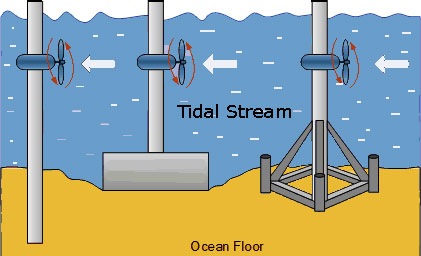
Tidal stream generators are operate in a similar concept of wind turbines. These turbines capturers energy from the natural flow of the water using turbine blades. Turbine blades are connect to a generator through a gearbox. Tidal stream generators can place in a water stream, submerge in water and also can built into existing structures such as bridges.
Tidal barrage
The tidal barrage also known as impoundment barrage .In this method tidal energy is capture by building a dam to capture a large volume of water in a tidal estuary at high tide. The dam is build across the full width of the estuary .The capture water is release through turbines at low tide to generate power.
Tidal lagoon
In tidal barrage, water is held in a natural estuary building a dam. This can affect the natural habitat. In the tidal lagoon, an artificial structure is build with retaining wall to hold water (and then release through turbines).So the effect on the natural environment can minimized by tidal lagoon. Power generation can also done when filling the lagoon. The water can be pump by using a excess energy from other renewable source.
Dynamic tidal power
Dynamic tidal power is a newly propose method to produces tidal energy. A large T shaped structure (30-60 km) is build from the coast into the sea .The structure does not enclose anything. It interferes with the daily tidal currents . A water level difference (a head) is create between the two sides of the structure .Turbines are place along the structure (100s or 1000s of turbines can be place).This method does not require much tidal range. Hence suitable for most locations .But the head is proportional to the length of the structure. A head of 2 – 3 m would require 60 km long dam. Building the structure can be an economical and an engineering challenge.
The energy is store in the sea in different forms. One is marine current energy. Marine current is generat by tidal affects and the thermal and salinity differences in the seawater.These types of energy sources are in non-conventional energy sources catogery. And also this energy source is divide three main categories, 1.Marine wave energy 2.Wave…

